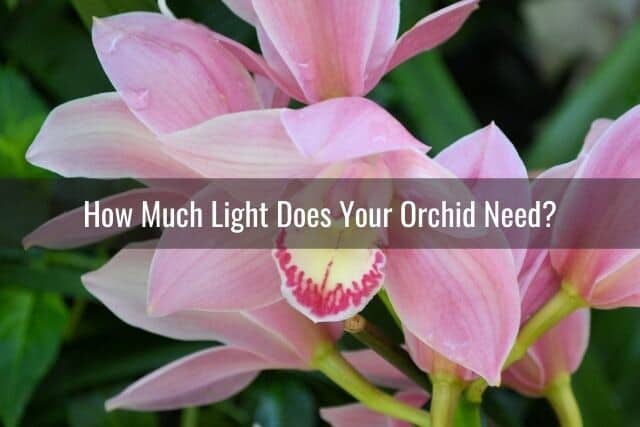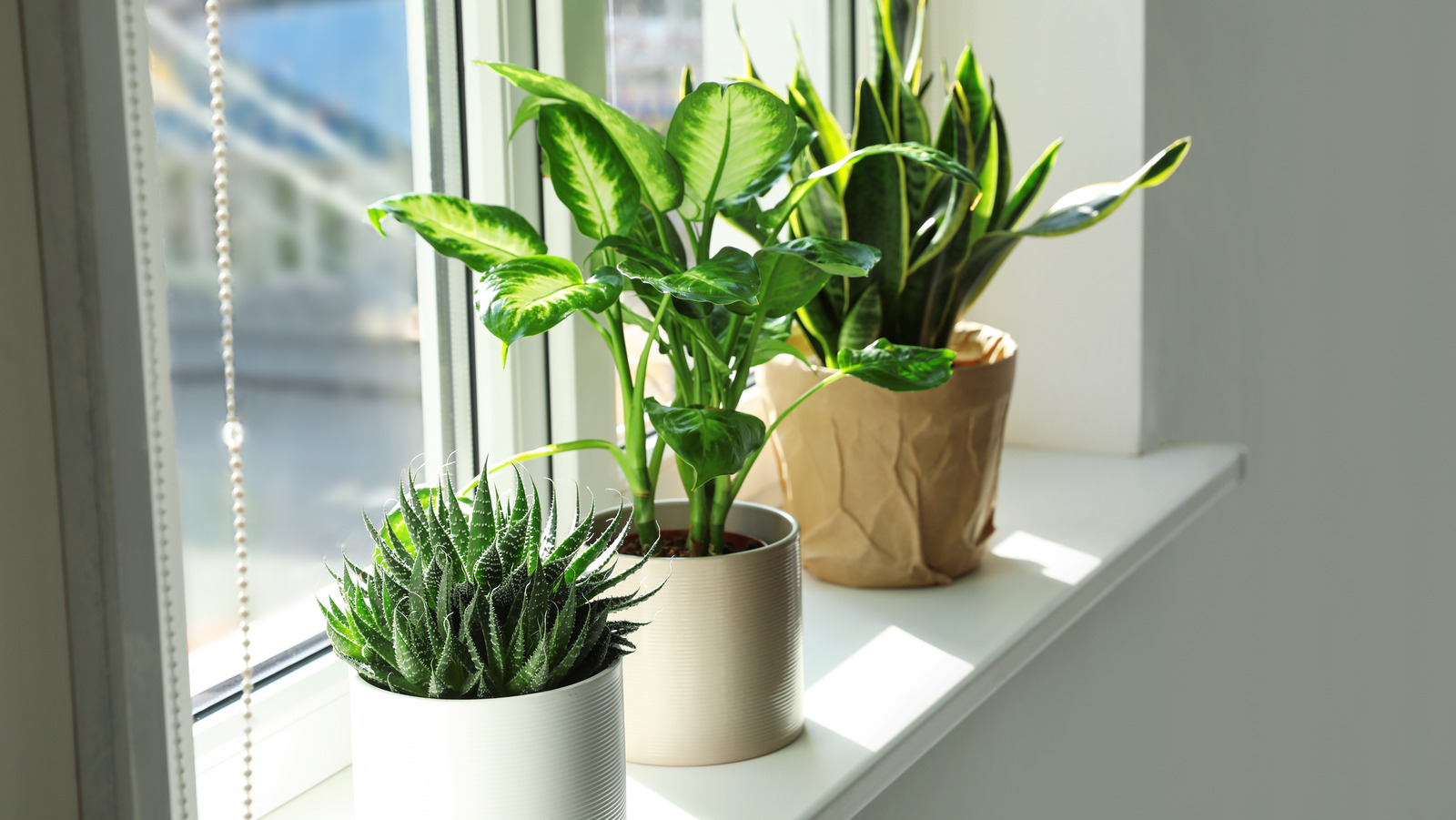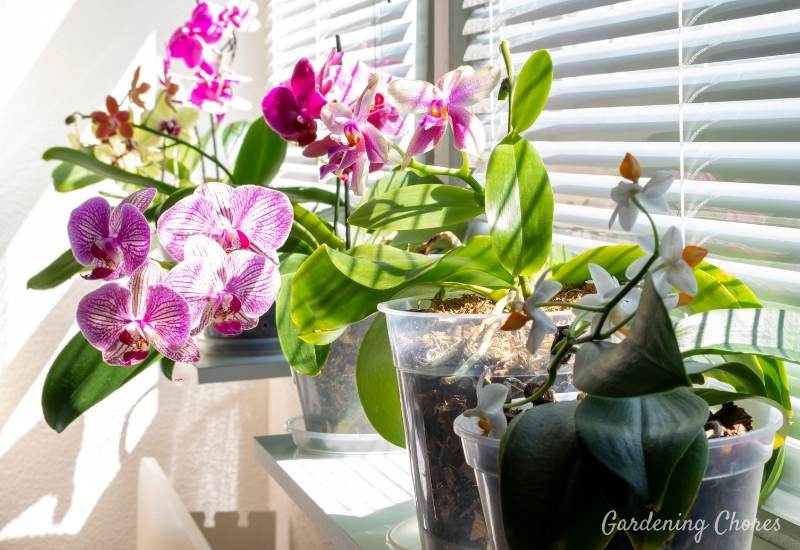Understanding the Lighting Needs of Orchids
Orchids, like all plants, require sunlight to undergo photosynthesis and grow. However, the amount of sunlight an orchid needs can vary greatly depending on the type of orchid and its native habitat. Some orchids, such as Phalaenopsis, can thrive in low-light conditions and may even require protection from direct sunlight. On the other hand, orchids like Vanda and Cattleya require bright, direct sunlight to bloom and grow well.
When considering the lighting needs of an orchid, it’s essential to understand the concept of “sunlight hours.” This refers to the amount of time an orchid is exposed to direct sunlight per day. Most orchids require between 10 to 14 hours of sunlight per day, although some species may require more or less.
So, does an orchid need sun? The answer is yes, but the amount of sunlight required can vary greatly depending on the type of orchid. By understanding the specific lighting needs of your orchid, you can provide the right amount of sunlight to promote healthy growth and blooming.
In general, orchids can be divided into three categories based on their lighting requirements: low-light, medium-light, and bright-light orchids. Low-light orchids, such as Paphiopedilum, can thrive in conditions with as little as 5,000-7,000 lux of light. Medium-light orchids, such as Phalaenopsis, require 10,000-20,000 lux of light, while bright-light orchids, such as Vanda, require 20,000-30,000 lux of light or more.
By understanding the lighting needs of your orchid, you can provide the right amount of sunlight to promote healthy growth and blooming. Whether you’re growing orchids indoors or outdoors, providing the right amount of sunlight is crucial for their success.
How to Determine the Right Amount of Sunlight for Your Orchid
To determine the right amount of sunlight for your orchid, it’s essential to assess the lighting conditions in your home or greenhouse. One way to do this is by using a light meter, which measures the intensity of light in lux. Most orchids require between 10,000 to 20,000 lux of light, although some species may require more or less.
Another way to assess the lighting conditions is by observing the natural light patterns in your home or greenhouse. Take note of the direction and intensity of the sunlight throughout the day. For example, a south-facing window receives direct sunlight for most of the day, while an east- or west-facing window receives indirect sunlight.
Once you have assessed the lighting conditions, you can adjust the lighting to meet the specific needs of your orchid. If your orchid requires bright, direct sunlight, you can place it near a south-facing window or use a grow light to supplement the natural light. If your orchid requires low to medium light, you can place it near an east- or west-facing window or use a sheer curtain to filter the sunlight.
It’s also important to consider the time of day and the season when determining the right amount of sunlight for your orchid. For example, during the summer months, the sun’s rays are stronger, and your orchid may require more shade to prevent scorching. During the winter months, the sun’s rays are weaker, and your orchid may require more light to promote growth.
So, does an orchid need sun? The answer is yes, but the amount of sunlight required can vary greatly depending on the type of orchid and the lighting conditions in your home or greenhouse. By assessing the lighting conditions and adjusting the lighting accordingly, you can provide your orchid with the right amount of sunlight to promote healthy growth and blooming.
Some common signs that your orchid is receiving too much or too little sunlight include leaf scorch, fading, and reduced growth. If you notice any of these signs, adjust the lighting conditions accordingly to ensure your orchid is receiving the right amount of sunlight.
The Benefits of Bright, Indirect Light for Orchids
Bright, indirect light is one of the most beneficial types of light for orchids. This type of light promotes healthy growth, blooming, and root development, making it an ideal choice for many types of orchids. But what exactly is bright, indirect light, and how can you achieve it for your orchid?
Bright, indirect light is light that is filtered or diffused in some way, rather than direct sunlight. This type of light is often described as “soft” or “gentle,” and it is ideal for orchids that require high levels of light but may be sensitive to direct sunlight. Some examples of bright, indirect light include light that is filtered through a sheer curtain or shade cloth, or light that is reflected off a surface such as a mirror or white wall.
So, how can you achieve bright, indirect light for your orchid? One way is to use sheer curtains or blinds to filter the sunlight. This will help to soften the light and prevent it from becoming too intense for your orchid. Another way is to use shade cloth or a diffuser to scatter the light and reduce its intensity.
Another benefit of bright, indirect light is that it can help to promote blooming in orchids. Many types of orchids require high levels of light to bloom, and bright, indirect light can provide the necessary intensity without causing damage to the plant. Additionally, bright, indirect light can help to promote healthy root development, which is essential for the overall health and well-being of the plant.
When it comes to providing bright, indirect light for your orchid, there are a few things to keep in mind. First, make sure that the light is not too intense, as this can cause damage to the plant. Second, ensure that the light is consistent and not too variable, as this can cause stress to the plant. Finally, be sure to monitor your orchid’s response to the light and adjust as needed.
By providing bright, indirect light for your orchid, you can help to promote healthy growth, blooming, and root development. This type of light is ideal for many types of orchids, and it can be achieved using a variety of methods, including sheer curtains, blinds, and shade cloth. So, does an orchid need sun? While direct sunlight can be beneficial, bright, indirect light is often a better choice for many types of orchids.
What Happens When Orchids Receive Too Much or Too Little Sunlight
While sunlight is essential for orchid growth and development, too much or too little sunlight can be detrimental to the plant. When orchids receive too much sunlight, they can experience leaf scorch, fading, and reduced growth. On the other hand, when orchids receive too little sunlight, they can become leggy, weak, and prone to disease.
Leaf scorch is a common problem that occurs when orchids receive too much direct sunlight. This can cause the leaves to become discolored, wilted, and even develop brown or black spots. To prevent leaf scorch, it’s essential to provide bright, indirect light for your orchid, rather than direct sunlight.
Fading is another issue that can occur when orchids receive too much sunlight. This can cause the flowers to become discolored, wilted, and even drop off prematurely. To prevent fading, it’s essential to provide filtered or diffused light for your orchid, rather than direct sunlight.
Reduced growth is also a common problem that occurs when orchids receive too much or too little sunlight. When orchids receive too much sunlight, they can become stressed, leading to reduced growth and development. On the other hand, when orchids receive too little sunlight, they can become weak and leggy, leading to reduced growth and development.
So, how can you identify if your orchid is receiving too much or too little sunlight? Look for signs such as leaf scorch, fading, and reduced growth. If you notice any of these signs, adjust the lighting conditions accordingly to ensure your orchid is receiving the right amount of sunlight.
For example, if you notice that your orchid is experiencing leaf scorch, try moving it to a spot with bright, indirect light. If you notice that your orchid is fading, try providing filtered or diffused light to prevent further discoloration.
By understanding the potential problems that can arise when orchids receive too much or too little sunlight, you can take steps to prevent these issues and ensure your orchid receives the right amount of sunlight for optimal growth and development. So, does an orchid need sun? While sunlight is essential, it’s crucial to provide the right amount of sunlight to prevent problems and promote healthy growth.
East-, West-, and South-Facing Windows: How to Make the Most of Natural Light
When it comes to providing natural light for your orchid, the direction of the window can make a big difference. East-, west-, and south-facing windows offer different levels of natural light, and understanding these differences can help you make the most of the available light.
East-facing windows receive gentle, indirect light in the morning, making them ideal for orchids that require low to medium light. This type of light is perfect for orchids such as Phalaenopsis, which prefer bright, indirect light.
West-facing windows receive direct sunlight in the afternoon, making them ideal for orchids that require high light. This type of light is perfect for orchids such as Vanda, which require bright, direct sunlight to bloom.
South-facing windows receive direct sunlight throughout the day, making them ideal for orchids that require high light. However, this type of light can be intense, and orchids may require shading to prevent scorching.
To make the most of natural light from different directions, you can use mirrors, reflectors, and other tools to maximize the available light. For example, you can place a mirror opposite an east-facing window to reflect the morning light and provide additional light for your orchid.
Another way to make the most of natural light is to use sheer curtains or blinds to filter the light. This can help to prevent scorching and provide a more gentle, indirect light that is perfect for orchids.
By understanding the different levels of natural light provided by east-, west-, and south-facing windows, you can make informed decisions about the best placement for your orchid. So, does an orchid need sun? While sunlight is essential, it’s crucial to provide the right amount of sunlight for your orchid’s specific needs.
Remember, the key to providing the right amount of sunlight for your orchid is to observe its response to different lighting conditions and adjust accordingly. By doing so, you can ensure that your orchid receives the right amount of sunlight to promote healthy growth and blooming.
Supplementing Natural Light with Artificial Lighting
While natural light is essential for orchid growth and development, it’s not always possible to provide the right amount of light, especially during the winter months or in areas with limited sunlight. This is where artificial lighting comes in – a great way to supplement natural light and provide your orchid with the light it needs to thrive.
LED grow lights are a popular choice for orchid growers, as they are energy-efficient, produce minimal heat, and can be tailored to specific light spectrums. When choosing an LED grow light, consider the specific needs of your orchid, including the intensity and spectrum of light required.
For example, Phalaenopsis orchids require bright, indirect light, while Vanda orchids require high-intensity light to bloom. By choosing an LED grow light that matches the specific needs of your orchid, you can provide the right amount of light to promote healthy growth and blooming.
Another benefit of artificial lighting is that it can be used to extend the day length, providing your orchid with more hours of light per day. This can be especially beneficial during the winter months when natural daylight hours are shorter.
When using artificial lighting, it’s essential to monitor your orchid’s response to the light and adjust the intensity and duration as needed. This will ensure that your orchid receives the right amount of light to promote healthy growth and development.
So, does an orchid need sun? While sunlight is essential, artificial lighting can be a great way to supplement natural light and provide your orchid with the light it needs to thrive. By choosing the right type and intensity of artificial lighting, you can promote healthy growth and blooming in your orchid.
Remember, the key to successful orchid care is to provide the right amount of light, water, and nutrients. By understanding the specific needs of your orchid and providing the right conditions, you can enjoy beautiful blooms and a thriving plant.
Monitoring and Adjusting Lighting Conditions for Optimal Orchid Care
Providing the right amount of sunlight for your orchid is crucial for its growth and development. However, the lighting conditions in your home or greenhouse can change over time, and it’s essential to monitor and adjust the lighting conditions to ensure optimal orchid care.
One way to monitor the lighting conditions is to observe your orchid’s response to different lighting conditions. If your orchid is receiving too much or too little sunlight, it may exhibit signs such as leaf scorch, fading, or reduced growth. By observing these signs, you can adjust the lighting conditions to provide the right amount of sunlight for your orchid.
Another way to monitor the lighting conditions is to use a light meter. A light meter can help you measure the intensity of the light in your home or greenhouse, allowing you to adjust the lighting conditions to meet the specific needs of your orchid.
When adjusting the lighting conditions, it’s essential to consider the specific needs of your orchid. Different types of orchids have varying lighting requirements, and it’s crucial to provide the right amount of sunlight to promote healthy growth and development.
For example, Phalaenopsis orchids require bright, indirect light, while Vanda orchids require high-intensity light to bloom. By understanding the specific lighting needs of your orchid, you can adjust the lighting conditions to provide the right amount of sunlight.
So, does an orchid need sun? While sunlight is essential for orchid growth and development, it’s crucial to provide the right amount of sunlight to prevent problems and promote healthy growth. By monitoring and adjusting the lighting conditions, you can ensure that your orchid receives the right amount of sunlight to thrive.
Remember, the key to successful orchid care is to provide the right amount of light, water, and nutrients. By understanding the specific needs of your orchid and providing the right conditions, you can enjoy beautiful blooms and a thriving plant.
Creating a Lighting Schedule for Your Orchid’s Specific Needs
Creating a lighting schedule tailored to your orchid’s specific needs is crucial for optimal growth and development. By providing the right amount of light at the right time, you can promote healthy growth, blooming, and root development.
One way to create a lighting schedule is to use timers and automated lighting systems. These systems allow you to set specific lighting schedules for your orchid, ensuring that it receives the right amount of light at the right time.
For example, if you have a Phalaenopsis orchid that requires bright, indirect light, you can set a timer to provide 12 hours of light per day. This will ensure that your orchid receives the right amount of light to promote healthy growth and blooming.
Another way to create a lighting schedule is to observe your orchid’s natural growth cycle. By observing the changes in your orchid’s growth and development, you can adjust the lighting schedule to accommodate its specific needs.
For example, during the spring and summer months, your orchid may require more light to promote healthy growth and blooming. By adjusting the lighting schedule to provide more light during these months, you can promote optimal growth and development.
So, does an orchid need sun? While sunlight is essential for orchid growth and development, it’s crucial to provide the right amount of sunlight at the right time. By creating a lighting schedule tailored to your orchid’s specific needs, you can ensure that it receives the right amount of light to thrive.
Remember, the key to successful orchid care is to provide the right amount of light, water, and nutrients. By understanding the specific needs of your orchid and providing the right conditions, you can enjoy beautiful blooms and a thriving plant.







